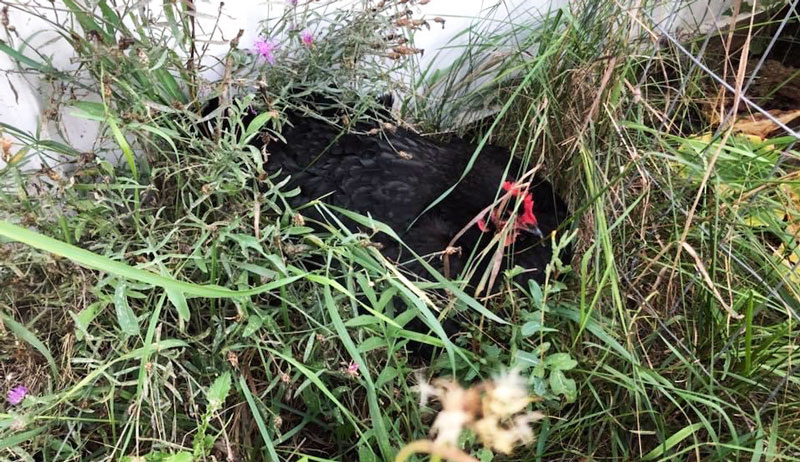How much does it cost to raise chickens? While purchasing chicks is relatively inexpensive, the coop, run, feed, and other expenses quickly add up. Learn how much it costs to raise chickens before you get started.
What Do You Need to Get Started
All chickens need some basic essentials: a coop, run, feed, feeders, water fountains, perches, nesting boxes, and protection from predators are all essentials your chickens can’t live without.
The Coop
If you have ever Googled, “How much does it cost to raise chickens?” You have already learned that the coop is the largest expense. Coop prices vary depending on the size of the coop you acquire, whether you purchase an already-built coop, assemble one yourself, or construct a “coop” in an existing outbuilding.
Before purchasing or constructing a coop, consider what you want your future flock to look like. By planning ahead, you can prevent having to erect another coop in the future, saving you further expenses.

Pre-Built Chicken Coop Costs
Despite their cost, pre-built chicken coops are a popular option for starter flocks. Assembled coops range in price from several hundred dollars to over six thousand dollars, depending on the coop size, whether there is an attached run, and the quality of the coop you are purchasing.
Bear in mind that for pre-built coop companies to cut costs, they may also be of lesser quality, so be sure to shop around for the safest coop, not just the cheapest.
DIY Coops
If you are handy at building things, DIY coops are an excellent way to cut costs. DIY coops also allow you to be creative and build the ideal coop to fit your needs. Construct a coop that is functional, human-accessible, predator-proof, and weather-proofed to keep your flock safe for the best chicken-raising experience.
When purchasing coop building supplies, avoid cheap materials such as chicken wire to create a safe home for the flock. The average cost of a DIY coop falls between three hundred and one thousand five hundred dollars.
Barn Coops
Constructing a coop in an existing barn or other outbuilding is the most budget-friendly option. Take care to only house chickens in an outbuilding with a wooden or cement floor. The estimated cost of constructing a coop in an outbuilding is between three and six hundred dollars. (Bear in mind that this cost does not include any repairs needed to make the outbuilding predator-proofed.)
Building the Run
Many chicken coops have runs attached to them, but constructing a run is necessary if you plan on housing your flock in a building without an attached run. Like the coop, the run should be safe from predators (including digging and ariel predators).
Chicken tractors are the most popular run options and generally cost between three hundred and four thousand dollars, depending on the size. Chicken tractors are often not completely predator-proof, which will add additional costs.
Coop Essentials
Coop essentials should not cost too much unless you plan to be extravagant. These essentials include nesting boxes, a perch, feeders, and water founts. To better learn how much does it cost to raise chickens, let’s look at the prices for these coop essentials.
The Perch
Untreated 2x4x8 boards (cut down to desired perch size) are really the best perching option, costing under five dollars per board. These boards make for better perches than old ladders, as the narrow side of the board is the ideal width for hens to easily grip the perch with their feet.
Nesting Boxes
Nesting box prices vary depending on whether you buy some from a manufacturer, build your own, or use some old storage containers. My flock uses plastic containers from Walmart, as they are budget-friendly and easy to clean up any accidental egg messes.
Nesting box prices vary from twenty dollars to several hundred, depending on your chosen style.
Feeders & Water Founts
Like all chicken care products, feeders and water fountain prices vary depending on style and size. However, for basic water founts and feeders for small backyard flocks, each feeder and water fount should cost approximately ten dollars.
Always have at least two feeders and two water founts in case one accidentally spills to ensure your flock has water and food at all times.
Feed Costs
Pellets, crumble, organic, natural, and non-organic are some of the choices to make before you can decide the estimated cost of feeding chickens. Estimate one fifty-pound bag of feed per month for every ten chickens (depending on the chickens’ age and the time of year).
- Organic Feed Cost: $30.00-$40.00 per forty lbs. of feed
- Non-Organic Feed Cost: $20.00-$25.00 per fifty lbs. of feed
Predator Protection
Predator protection costs vary depending on the condition of the coop/barn or existing outbuilding and run you have and the predators found in your area. Remember, predator-proofing is a life-long endeavor, not a once-and-done chore, leading to additional costs per year.
Chicken Costs
The average laying pullet (chick) costs about four dollars. For a flock of ten chickens, the estimated cost is forty dollars. Purchasing chicks through a feedstore will help cut costs, as you won’t need to pay for shipping.
How Much Does It Cost to Raise Chickens in Total?
How much does it cost to raise chickens in total depends on your specific wants and needs. However, the estimated startup costs for a flock of ten usually fall between one thousand three hundred dollars to over eight thousand dollars.
Additional costs should be considered when raising chickens for pets, including treats, supplements, and vet care.
How much does it cost to raise chickens depends on how you want to raise your flock and how important it is to protect them from predators. But for those drawn to raising their own food or pet chicken flock, the costs and effort are well worth the money and time.
This article about how much does it cost to raise chickens was written for Chickens magazine. Click here to subscribe.















